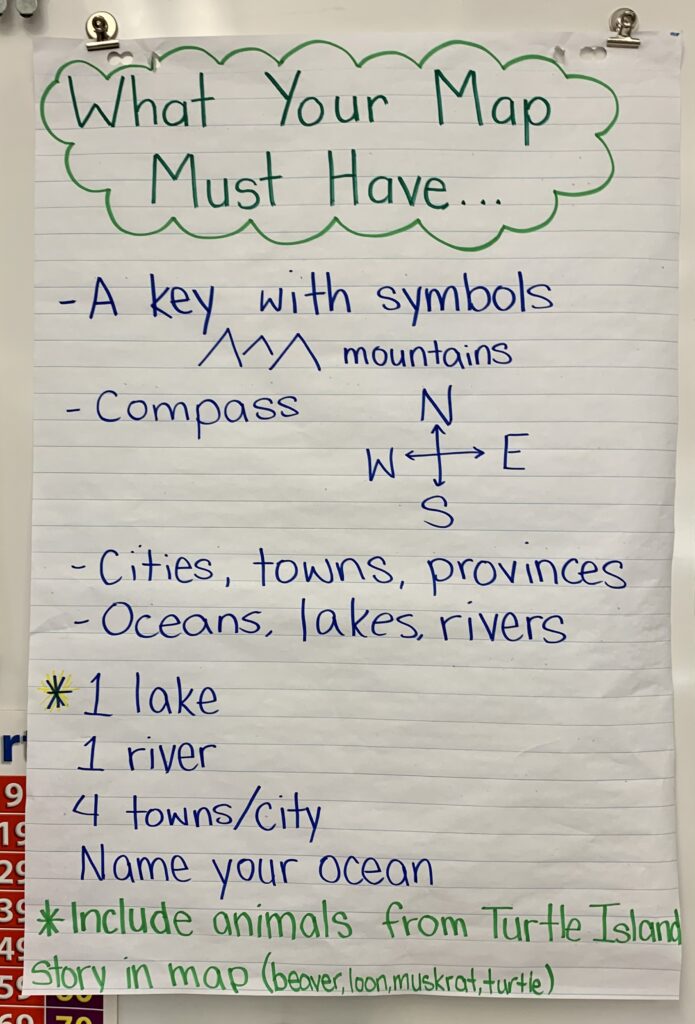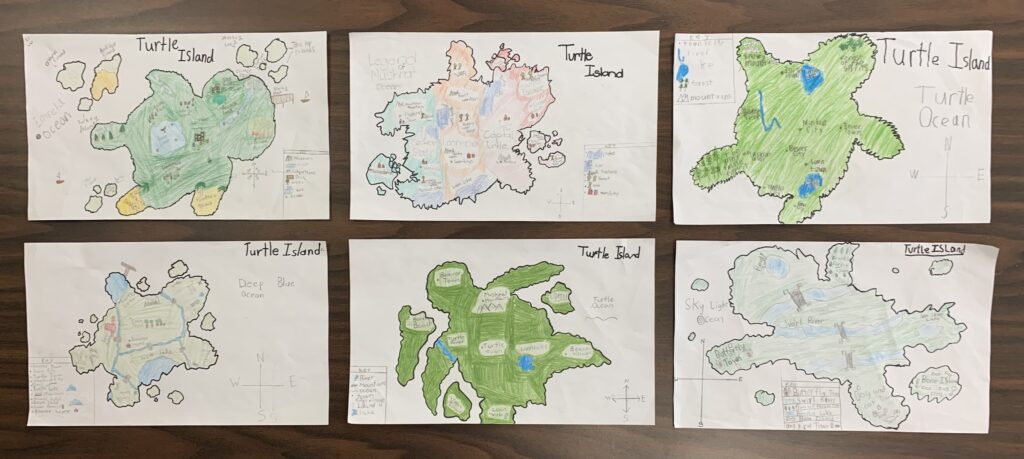Co-Created Assessment Models: Building Student Autonomy
During my final practicum in a grade 2/3 class one of my personal goals was to implement a form of co-created assessment. Throughout my learning as a teacher candidate, I have had many conversations about assessment, what this looks like, how to implement this, and positive and negative attributes of this in practice. I think that as a whole assessment should provide students with a goal and purpose to work towards and an opportunity to succeed. Therefore, I decided to implement the use of a co-created assessment model with my students.
During the Social Studies unit I was doing with my students I found the perfect opportunity to effectively introduce this model. I was doing a lesson based on the Turtle Island Creation stories of the Haudenosaunee and Ojibway Peoples, and created an activity for the students to create their own map of what they imagine Turtle Island to be. This activity was relevant for these students as they had recently learned about maps, how they are constructed, what they have on them, and how they are used. This background knowledge from previous learning lent itself well to the Turtle Island map creating activity. After introducing the activity I told my class that we need to discuss what maps need and, therefore, what we all need to complete our own maps. I found that the students were very excited to share their knowledge on the topic!
As they were discussing what the “Must-Haves” for their maps, I wrote their ideas down on a piece of chart paper. After they had come up with a good amount of must-haves, I added a few extra “needs” that still few within their points. These mostly consisted of me giving them a set number of things that they need to include, such as 1 river, 1 lake, 4 cities/towns, naming their ocean, and following a nature-theme when naming places. Before beginning their maps, I reminded students that because we all worked together to make our map must-haves that they will need to make sure their map includes all of these, because I will be looking for them.
Throughout the time students had to work on their maps I was incredibly happy to see that students were continually referring to our co-created criteria chart to make sure they had all the components. I found that this process had created strong student autonomy of their learning and assignment. I also noticed the great pride students had in their work and the time and effort being put into this.
When it came to assessing their final work I was blown away! There was not one map that lacked any must-have component and all the maps demonstrated incredible attention to detail. I truly could not have been happier with the outcome!
I am very happy that I took this opportunity in my final practicum to implement a co-created form of assessment. I gained a new perspective of the effects of assessment and a passion for creating opportunities for student success.

